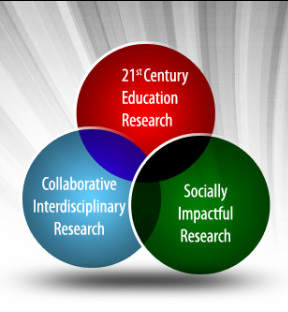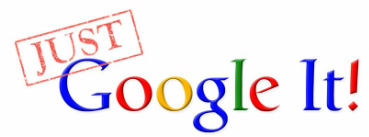Theory of Cognitive Development (
Piaget), Social Development Theory (
Vygotsky) , Taxonomy of Learning Domains (
Bloom&Anderson), Theory of Multiple Intelligences (
Gardner)
Performance – Competencies, Motivation, Abilities, Skills
Competencies are the state or quality of being adequately or well qualified to perform a task. A person gains competency through education, training, experience, and natural abilities.
While there are many definitions of competency, most of them have two common components:
• The competencies are observable or measurable skills, knowledge, and abilities.
• The KSAs (knowledge, skills, attitude) must distinguish between superior and other performers.
Performance is focused behavior or purposeful work (Rudman, 1998, p. 205). That is, jobs exist to achieve specific and defined results (outputs) and people are employed so that organizations can achieve those results. This is performed by accomplishing tasks.
Abilities are general human capacities related to the performance of tasks. They develop over time through the interaction of heredity and experience, and are long lasting (
Desimone, Wernerl, 2012).
A recent study (
Tay, Diener, 2011) discovered that as hypothesized by
Maslow (1954), people tend to achieve basic and safety needs before other needs. However, fulfilling the various needs has relatively independent effects on a person's Subjective Well-Being. Thus rather than being a pyramid with the basic human needs arranged in a hierarchical order, it is more like a box with the basic human needs scattered within and depending on the situation and/or environment, different needs rise to the top to compensate for the deficient needs.
Source:
- Donald Clark,
http://www.nwlink.com/~donclark/performance/competencies.html
- Knowles, M. (1975). Self-Directed Learning. New York: Association Press.
- Rudman, R. (1998). Performance Planning and Review. Warriewood, Australia: Business & professional Publishing.
- Tay, L., Diener, E. (2011). Needs and subjective well-being around the world.. Journal of Personality and Social Psychology, Vol 101(2), Aug 2011, 354-365. doi: 10.1037/a0023779.
- Image source: Donald Clark,
http://www.nwlink.com/~donclark/performance/experience.html
The Mind/Brain Connection
The adult
human brain contains about
11 billion cells called neurons and each neuron may have up to
10,000 connections with other neurons called synapses. One of the main theories held by neuroscientists, psychologists, and even some philosophers is that all knowledge and skills is a function of neurons and their synapses. Our brain captures certain aspects of each experience by eliminating certain neurons and synapses. That is, it works backwards when compared to a production factory. For example, to make a radio, you assemble components, while the brain works more like an artist sculpturing from a rock — certain pieces are chipped away.
Psychologist
William Greenough of the University of Illinois has found that there is a rapid spurt of synapses during the first couple of months during a rat's life that occurs regardless of the amount or type of sensory experience. This period of synaptic blooming is followed by a period of sharp decline. This is, there is a pruning of synapses that occur based upon the activity of the brain. This is called experience-expectant learning (
Cziko, 2000).
Source:
- Donald Clark,
http://www.nwlink.com/~donclark/performance/experience.html
- Cziko, Gary (2000). The Things We Do. Cambridge, Massachusetts: The MIT Press. free download
http://faculty.ed.uiuc.edu/g-cziko/twd/pdf/index.html
Jean Piaget (1896-1980)- Piaget's Theory of Cognitive Development
Piaget's theory of cognitive development is a comprehensive theory about the nature and development of human intelligence. It was first developed by a Swiss developmental psychologist,
Jean Piaget.
„
Jean Piaget (1896-1980) was one of the most influential researchers in the area of developmental psychology during the 20th century. Piaget originally trained in the areas of biology and philosophy and considered himself a "genetic epistemologist." He was mainly interested in the biological influences on "how we come to know." He believed that what distinguishes human beings from other animals is our ability to do "abstract symbolic reasoning." Piaget's views are often compared with those of Lev Vygotsky (1896-1934), who looked more to social interaction as the primary source of cognition and behavior. This is somewhat similar to the distinctions made between Freud and Erikson in terms of the development of personality. The writings of Piaget (e.g., 1972, 1990; see Piaget, Gruber, & Voneche) and Vygotsky (e.g. Vygotsky, 1986; Vygotsky & Vygotsky, 1980), along with the work of John Dewey (e.g., Dewey, 1997a, 1997b), Jerome Bruner (e.g., 1966, 1974) and Ulrick Neisser (1967) form the basis of the constructivist theory of learning and instruction”.
Source: Huitt, W., & Hummel, J. (2003). Piaget's theory of cognitive development. Educational Psychology Interactive. Valdosta, GA: Valdosta State University,
http://www.edpsycinteractive.org/topics/cognition/piaget.html
Image source: ITCs in Education - This model proposes that information is processed and stored in 3 stages,
http://www.tcd.ie/Education/ICT/unit02/explanation03b.htm
Jean Piaget: founder of Constructivism
Constructivism is a theory of knowledge (epistemology) that argues that humans generate knowledge and meaning from an interaction between their experiences and their ideas. It has influenced a number of disciplines, including psychology, sociology, education and the history of science.
Constructivist principles of learning - design and explaining learning:
1. ACTIVE PROCESS - Learning is an active process in which the learner uses sensory input and constructs meaning by using it;
2. DEVELOPMENT - People learn how to learn as they learn;
3. MENTAL ACTION - The action is crucial to build a mental sense;
4. LANGUAGE - Learning involves language: the language we use influences learning;
5. SOCIAL ACTIVITY - Learning is a social activity: is intimately associated with our relationship with other human beings such as teachers, colleagues, family;
6. CONTEXT - Learning is contextual: we do not learn isolated facts and theories in an abstract taken from our minds, but in relation to what we know, what we believe, with our fears and prejudices;
7. EVOLUTION OF KNOWLEDGE - It takes knowledge to learn: it is not possible to assimilate new knowledge without having some structure developed from previous knowledge. The more we know, the more we can learn;
8. MOTIVATIONAL SYSTEM - Motivation is a key concept in learning.
Source: Woolfolk Anita E. (1998), Educational Psychology, Allyn and Bacon, Boston, London Toronto, Sydney, Tokyo, Singapore.
The Information Processing Approach to Cognition
The Information Processing model places emphasis on how information entering through the senses is encoded, stored, retrieved and utilised by the brain. Thus, learning becomes the process of committing our symbolic representations to memory where they may be processed and the study of learning is primarily approach through the study of memory.
One of the major issues in cognitive psychology is the study of memory. The dominant view is labeled the "stage theory" and is based on the work of Atkinson and Shiffrin (1968).
Organization (types) of knowledge:
This model proposes that information is processed and stored in 3 stages (Sensory memory - STSS; Short-term memory - STM; Long-term memory - LTM). As information is stored in long-term memory, it is organized using one or more structures: declarative memory (generally refers to information we can talk about), procedural (how to - driving a car, riding a bike), and/or imagery (pictures).
Declarative Memory:
•
Semantic Memory- facts and generalized information (concepts, principles, rules; problem-solving strategies; learning strategies)
•
Episodic Memory- personal experience (information in stories and analogies)
Source:
- Huitt, W. (2003). The information processing approach to cognition. Educational Psychology Interactive. Valdosta, GA: Valdosta State University. Retrieved [date] from,
http://www.edpsycinteractive.org/topics/cognition/infoproc.html
- ITCs in Education, http://www.tcd.ie/Education/ICT/unit02/explanation03b.htm
-
http://www.skybrary.aero/index.php/Information_Processing
- O’Brien, D. 1993. How to Develop a Perfect Memory. London. Pavilion Books Limited.
Lev Vygotsky (1896-1934) - Social Development Theory
Zone of Proximal Development (ZPD)
The concept of the More Knowledgeable Other is integrally related to the second important principle of Vygotsky's work, the Zone of Proximal Development.
This is an important concept that relates to the difference between what a child can achieve independently and what a child can achieve with guidance and encouragement from a skilled partner.
The work of
Lev Vygotsky (1934) has become the foundation of much research and theory in cognitive development over the past several decades, particularly of what has become known as Social Development Theory. Vygotsky's theories stress the fundamental role of social interaction in the development of cognition Vygotsky, 1978), as he believed strongly that community plays a central role in the process of "making meaning."
"
The work of Lev Vygotsky and other developmental psychologists has become the foundation of much research and theory in developmental cognition over the past several decades, particularly of what has become known as social development theory. Vygotsky's theories stress the fundamental role of social interaction in the development of cognition (Vygotsky, 1978; Wertsch, 1985), as he believed strongly that community plays a central role in the process of "making meaning." Unlike Piaget's notion that children's development must necessarily precede their learning, Vygotsky argued, "learning is a necessary and universal aspect of the process of developing culturally organized, specifically human psychological function" (1978, p. 90). In other words, social learning tends to precede development".
Ref.: Galloway, C. M. (2001). Vygotsky's Constructionism. In M. Orey (Ed.), Emerging perspectives on learning, teaching, amd technology. Retrieved (insert date) from
http://projects.coe.uga.edu/epltt/
For example, the child could not solve the jigsaw puzzle (in the example above) by itself and would have taken a long time to do so (if at all), but was able to solve it following interaction with the father, and has developed competence at this skill that will be applied to future jigsaws.
Vygotsky (1978) sees the Zone of Proximal Development as the area where the most sensitive instruction or guidance should be given - allowing the child to develop skills they will then use on their own - developing higher mental functions.
Vygotsky also views interaction with peers as an effective way of developing skills and strategies. He suggests that teachers use cooperative learning exercises where less competent children develop with help from more skillful peers - within the zone of proximal development.
Source: McLeod, S. A. (2007). Lev Vygotsky. Retrieved from
http://www.simplypsychology.org/vygotsky.html
„
The classroom contains wonderful social ties necessary for learning in Vygotsky's theories. Using computers for technology in the classroom can augment and enhance the social dynamics of his theory by adding a prominent cultural tool. In order to utilize this technology, teachers can create lessons that require students to work in groups with task-related interaction, and utilize their higher order thinking skills.”
Ref.: Pepperdine University,
http://cadres.pepperdine.edu/omcadre6/BookProject/vygotsky.htm
Source:
- McLeod, S. A. (2007). Lev Vygotsky. Retrieved from
http://www.simplypsychology.org/vygotsky.html
- Vygotsky, L. S. (1978). Mind in society: The development of higher psychological processes. Chapter 6 Interaction between learning and development (79-91). Cambridge, MA: Harvard University Press.
- Source image: Pepperdine University,
http://cadres.pepperdine.edu/omcadre6/BookProject/vygotsky.htm
Read more:
-
http://www.instructionaldesign.org/theories/social-development.html
-
http://fathmathsaeeda.wordpress.com/2013/11/05/lev-semenovich-vygotsky/
-
http://www.glogster.com/hayleyjune92/applying-vygotsky-s-theory-to-the-classroom-/g-6kusehrai35kosvpdcj2sa0
Benjamin Bloom (1913 – 1999) - Bloom's Taxonomy
Bloom's Taxonomy of Learning Domains
Bloom's Taxonomy was created in 1956 under the leadership of educational psychologist Dr Benjamin Bloom in order to promote higher forms of thinking in education, such as analyzing and evaluating concepts, processes, procedures, and principles, rather than just remembering facts (rote learning). It is most often used when designing educational, training, and learning processes.
The Three Domains of Learning.
The committee identified three domains of educational activities or learning (Bloom, et al. 1956):
•
Cognitive: mental skills (knowledge)
•
Affective: growth in feelings or emotional areas (attitude or self)
•
Psychomotor: manual or physical skills (skills)
Bloom's Revised Taxonomy.
Lorin Anderson, a former student of Bloom, and David Krathwohl revisited the cognitive domain in the mid-nineties and made some changes, with perhaps the three most prominent ones being (Anderson, Krathwohl, Airasian, Cruikshank, Mayer, Pintrich, Raths, Wittrock, 2000):
• changing the names in the six categories from noun to verb forms
• rearranging them as shown in the chart below
• creating a processes and levels of knowledge matrix.
Source:
- Donald Clark,
http://www.nwlink.com/~donclark/hrd/bloom.html
- Rex Heer, A Model of Learning Objectives, Center for Excellence in Learning and Teaching, Iowa State University,
http://www.celt.iastate.edu/teaching-resources/effective-practice/revised-blooms-taxonomy/
Read more: Andrew Churches, Bloom's Digital Taxonomy,
http://edorigami.wikispaces.com/Bloom%27s+Digital+Taxonomy
Bloom's Taxonomy and Web 2.0 tools by Samatha Penny
Web 2.0 is the read/write version of the internet; sometimes called the participatory web. We have collected a set of mostly FREE tools that students in the Learning Technologies program found useful.
 Bloom's Taxonomy and Web 2.0 tools by Samatha Penny
Source
Bloom's Taxonomy and Web 2.0 tools by Samatha Penny
Source: Margaret Riel, The Wikipedia of Learning Technologies from Pepperdine University, WEB 2.0: The Web You Help Create As Well As Use -
https://mindmaps.wikispaces.com/Collaborative+Tools
Online Collaboration Tools
"
Learning is no longer limited to classrooms. The advent of new technological tools has made it possible for distantly located students to collaborate with their instructors and peers for learning new skills and acquiring enhanced knowledge. Distance and time is no longer a barrier for imbibing knowledge. But for ensuring that students remain motivated and focused in their learning and gain the most from their interaction with their fellow students and instructors, proper strategies for learning activities need to be formulated and implemented. Otherwise, students will feel neglected and disengaged. For effective implementation of learning strategies, right aids need to be used. These online collaboration tools will enable students to communicate and collaborate fast and easily. This will sustain their interest, improve focus and they would be able to contribute in best possible way and get quality results in turn".
Ref.: Sharon Thomson (2014), Online Collaboration Tools and Strategies For Boosting Learning,
http://elearningindustry.com/6-online-collaboration-tools-and-strategies-boosting-learning
Howard Earl Gardner (born 1943) - Theory of Multiple Intelligences
"
The Theory of Multiple Intelligences is a critique of the standard psychological view of intellect: there is a single intelligence, adequately measured by IQ or other short answer tests. Instead, on the basis of evidence from disparate sources, the theory claims that human beings have a number of relatively discrete intellectual capacities. IQ tests assess linguistic and logical-mathematical intelligence, and sometimes spatial intelligence; and they are a reasonably good predictor of who will do well in a 20th (note: Not necessarily a 21st) century secular school. Humans, however, have several other significant intellectual capacities."
http://multipleintelligencesoasis.org/about/
Howard Gardner questioned the traditional view that supports the existence of one single human intelligence. Gardner argues that each individual possesses several distinct intellectual forms of intelligences in varying degrees, rather than just one single intelligence. The seven initial intelligences identified by Gardner are:
logical-mathematical,
linguistic,
spatial,
musical
body-kinaesthetic,
interpersonal and
intrapersonal.
An eighth intelligence, naturalist, has since been added.
The seven intelligences Gardner defines are:
1.
Logical-Mathematical Intelligence: this consists of the ability to detect patterns, reason deductively and think logically. This intelligence is most often associated with scientific and mathematical thinking.
2.
Linguistic Intelligence: this involves having a mastery of language. This intelligence includes the ability to effectively manipulate language to express oneself rhetorically or poetically. It also allows one to use language as a means to remember information.
3.
Spatial Intelligence: this gives one the ability to manipulate and create mental images in order to solve problems. This intelligence is not limited to visual domains, Gardner notes that spatial intelligence is also formed in blind children.
4.
Musical Intelligence: this encompasses the capability to recognize and compose musical pitches, tones, and rhythms. (Auditory functions are required for a person to develop this intelligence in relation to pitch and tone, but it is not needed for the knowledge of rhythm.)
5.
Bodily-Kinaesthetic Intelligence: this is the ability to use one's mental abilities to coordinate one's own bodily movements. This intelligence challenges the popular belief that mental and physical activities are unrelated.
6.
The Personal Intelligences: this refers to understanding other people; it includes interpersonal feelings and the intentions of others.
Intrapersonal intelligence: the ability to understand one's own feelings and motivations, knowing who you are, what you can do, what you want to do.
7.
Naturalist: this intelligence designates the human ability to discriminate among living things (plants, animals) as well as sensitivity to other features of the natural world (clouds, rock configurations).
Source: ICTs in Education,
http://www.tcd.ie/Education/ICT/unit02/explanation05.htm
 Read more
Read more:
- The Official Website of Multiple Intelligences Theory,
http://multipleintelligencesoasis.org/
- Project Zer,
http://www.pz.harvard.edu/
- The Good Project,
http://www.thegoodproject.org
- Howard Gardner,
http://howardgardner.com/
 From the reviews: "A 935-problem and almost 800-page super-problem book with solutions, whose reading would certainly challenge, attract, and keep really busy any undergraduate student interested in acquiring various problem-solving techniques. ... the array of remarkable problem books has gained a new addition that could be really useful to undergraduate students. ... a book about excellence in mathematics, coming from a long cultural tradition whose history and experience can only help us deepen our understanding of how mathematics could be taught in a more attractive and inquisitive way." (Bogdan D. Suceava and Jack B. Gaumer, The Mathematical Intelligencer, Vol. 33 (2), 2011)
From the reviews: "A 935-problem and almost 800-page super-problem book with solutions, whose reading would certainly challenge, attract, and keep really busy any undergraduate student interested in acquiring various problem-solving techniques. ... the array of remarkable problem books has gained a new addition that could be really useful to undergraduate students. ... a book about excellence in mathematics, coming from a long cultural tradition whose history and experience can only help us deepen our understanding of how mathematics could be taught in a more attractive and inquisitive way." (Bogdan D. Suceava and Jack B. Gaumer, The Mathematical Intelligencer, Vol. 33 (2), 2011) 

















